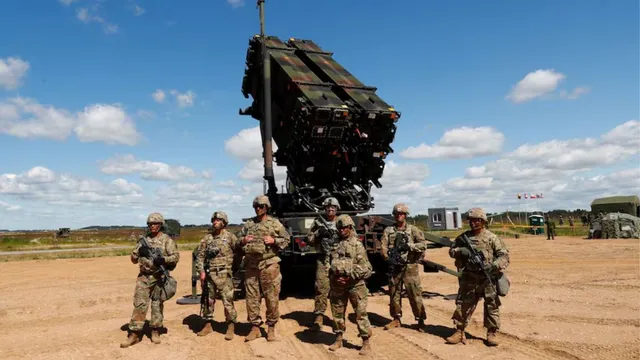- By Supratik Das
- Tue, 24 Jun 2025 11:03 AM (IST)
- Source:JND
Iran fired a missile salvo against American military bases in Qatar in response to the US airstrikes against its nuclear facilities. One of the key targets was the Al-Udeid Air Base in Qatar, the largest US military base in the region. In response to a statement issued by Iran's Supreme National Security Council, the missile attack was under "Operation Beshararat Fatah" and was designed to match the number of bombs used by the United States in its strikes on Iranian nuclear facilities. Tehran claimed that the targets chosen were away from civilian populations in order to "minimise risk to non-combatants."
The Qatari Defence Ministry said that all the Iranian ballistic missiles fired at Al-Udeid base were intercepted in mid-air by the air defence system. There were no reports of casualties or destruction of infrastructure. A report by Axios, quoting Israeli authorities, reported that Iran had launched six ballistic missiles against US targets in Qatar. Dramatic footage appeared on social media of interceptor missiles illuminating the skies above Doha. Eyewitnesses heard booming noises and flashes of light in the sky over the capital shortly after the Iranian missiles were fired.
Patriot PAC-3: The Shield Behind the Interception
The intercept was attributed to Qatar's Patriot Advanced Capability-3 (PAC-3) system, a US defence system purchased by the Gulf state as part of a 2012 arms deal. The package comprises 11 fire units, 44 launchers, and almost 1,000 missiles, featuring the advanced PAC-3 Missile Segment Enhancement (MSE) variant. Produced by Lockheed Martin, the PAC-3 system employs a "hit-to-kill" kinetic energy method, where the interceptor collides with the oncoming missile to disable it, similar to "striking a bullet with a bullet." In contrast to the older PAC-2 system that utilised reflected radar signals from the target and detonated close to it with a fragmentation warhead, the PAC-3 has onboard radar and a guidance system.
Qatar is one of the few countries equipped with the advanced PAC-3 Missile Segment Enhancement (MSE) system, an upgraded version of the standard PAC-3 interceptor. The MSE variant features a dual-pulse solid rocket motor, which significantly increases the missile’s range and maneuverability. It also expands the engagement envelope, allowing threats to be intercepted at higher altitudes and greater distances. In addition, MSE provides increased agility, enabling it to better counter maneuvering ballistic missiles and hypersonic glide vehicles. These upgrades enable Qatar's defense forces to neutralize threats from farther away and closer to key installations, such as the Al-Udeid Air Base, thereby expanding the shield of protection and minimizing the risk to troops.
ALSO READ: Qatar Opens Airspace After Trump Announces Israel-Iran Ceasefire; IndiGo Issues Travel Advisory
How It Works: A Split-Second Defence Mechanism
When a missile approaches a defended area:
1. Radar Detection: The AN/MPQ-65 radar scans and detects the incoming projectile.
2. Target Acquisition: The radar tracks the missile’s speed, direction, and trajectory.
3. Launch Command: The system’s control station selects the best interceptor and commands a launch.
4. Missile Flight: Within seconds, the PAC-3 travels at up to Mach 5 (~6,100 km/h).
5. Midcourse Correction: Using onboard radar and guidance computers, the missile homes in on the target.
6. Direct Hit: The PAC-3 impacts the oncoming missile at closing velocities of up to Mach 10 and annihilates it through kinetic energy.
Lockheed Martin has stated that this direct impact technology releases exponentially more energy than conventional warheads and limits the possibility of unexploded ordnance or falling debris on populated regions. The Patriot system achieved full operational capacity in Qatar in 2018 and since then, has been fully incorporated into joint defence training with the U.S. and Gulf Cooperation Council (GCC) allies, enhancing regional security and missile defense capabilities. The effective shoot-down of Iranian ballistic missiles across Qatar's airspace on Monday highlighted the combat capability of the Patriot PAC-3 missile defence system, an American-designed system aimed at neutralising high-speed air threats such as tactical ballistic missiles, cruise missiles, and advanced aircraft.

